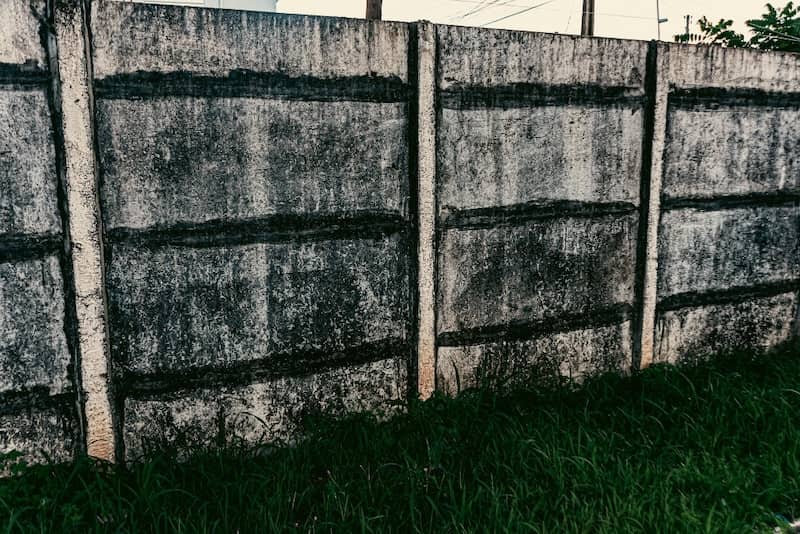Where there’s a sloped yard, there’s a great opportunity for a retaining wall to maximize your space.
Retaining walls provide both functionality and aesthetic appeal. However, like any other outdoor structure, they can encounter issues over time. Whether it’s due to weather conditions, soil erosion, or construction flaws, these problems can compromise the integrity of your retaining wall.
An improperly installed retaining wall can not only look unsightly, but it can quickly become dangerous as well. Let’s take a look at common retaining wall problems and provide solutions to fix them.
1. Poor Drainage
One of the most common issues with retaining walls is poor drainage. When water accumulates behind the wall, it increases the hydrostatic pressure, which can lead to cracking, bowing, and eventually, wall collapse.
To resolve this, ensure that your retaining wall has adequate drainage. Here are a few steps:
- Install a drainage system: Incorporate weep holes, drainage pipes, or gravel-filled trenches at the base of the wall to allow water to escape.
- Use permeable materials: Utilize materials that allow water to flow through, reducing build-up behind the wall.
- Grade the area: Slope the area above the wall to direct water away from it.
2. Foundation Issues
Retaining walls need a solid foundation to support their weight and the pressure of the retained soil. Inadequate or improperly built foundations can cause settling, shifting, or even tilting of the wall.
To combat foundation issues, you need to start with a strong foundation:
- Excavate properly: Dig a trench that is deep and wide enough for your wall’s base.
- Compact the soil: Ensure the base soil is compacted to increase its load-bearing capacity.
- Use a sturdy base material: Lay a base of crushed stone or gravel to create a stable foundation before starting the construction.
Professional retaining wall contractors will be able to install retaining walls with strong foundations and adequate drainage.
3. Soil Erosion
Erosion can undermine the retaining wall’s structural stability by washing away the supporting soil, leading to gaps and voids that may cause the wall to shift or collapse.
Protect against erosion by employing these measures:
- Vegetation: Plant ground cover or other vegetation around the wall to help hold the soil in place.
- Erosion control fabric: Install geotextile fabric behind the wall to prevent soil from washing out while allowing water to pass through.
- Regular maintenance: Inspect the area regularly and address any signs of erosion immediately.
4. Wall Cracking
Cracks in retaining walls can appear due to various reasons including soil movement, water pressure, or settling of the foundation. Small cracks can grow over time, leading to significant structural damage.
Address cracks promptly to prevent them from worsening:
- Fill minor cracks: Use a concrete patch or epoxy to fill hairline or minor cracks.
- Install expansion joints: In block or concrete walls, include expansion joints to accommodate any minor movements and prevent cracking.
- Reinforce the wall: Ensure that the wall was built with proper reinforcements like rebar or geogrid to add strength and stability.
5. Bowing or Leaning Walls
Retaining walls can bow or lean due to excessive pressure from the retained soil, inadequate construction, or foundation issues. This problem is usually a sign of a more significant issue that needs immediate attention.
Take quick action to correct bowing or leaning walls:
- Relieve pressure: Reduce the load behind the wall by removing some of the retained soil.
- Stabilize the wall: Add anchors or tiebacks to provide additional support and pull the wall back into position.
- Rebuild if necessary: In severe cases, you might need to partially or completely rebuild the wall, ensuring proper construction techniques are used to avoid future issues.
6. Pest Damage
Certain pests, such as burrowing animals or insects, can damage retaining walls by creating tunnels or nests that disrupt the soil structure, leading to instability.
Implement deterrents to keep pests away:
- Barriers: Use hardware cloth or mesh to create barriers around the wall’s base to prevent burrowing.
- Regular inspection: Check for signs of pest activity regularly and take action if any pests are detected.
- Professional pest control: If pest issues persist, consider hiring a professional exterminator to address the problem effectively.
7. Vegetation Damage
While plants can enhance the beauty of retaining walls, aggressive roots from trees or large shrubs can exert pressure on the wall, causing cracks or displacement.
Manage vegetation around your retaining wall:
- Choose wisely: Select plants with non-invasive root systems for planting near retaining walls.
- Regular trimming: Keep trees and shrubs pruned to control root growth.
- Root barriers: Install root barriers to prevent roots from growing under and exerting pressure on the wall.
Stay Aware
Maintaining the structural integrity of your retaining wall is essential for both safety and aesthetics in your outdoor space. By regularly checking for any issues and addressing common retaining wall problems promptly, you can extend the lifespan of your wall (and prevent costly repairs down the road).
If you’re experiencing any of these issues with your retaining wall and find the solutions challenging, Riverside Custom Outdoors is here to help. Our team of hardscape experts can assess the problem and provide tailored solutions to ensure your retaining wall remains strong and beautiful for years to come. Contact us today to schedule a consultation.

